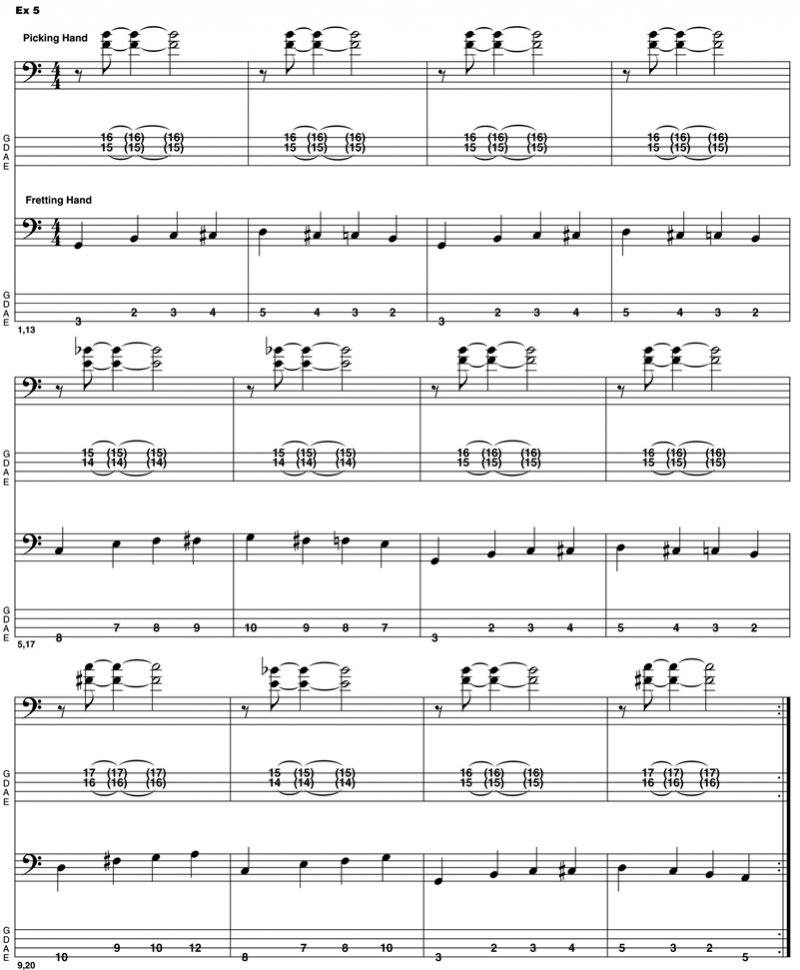Deep Thinking: Going Cross-handed
Deep Thinking: Going Cross-handed
Over the last few issues we have looked at some simple scales and arpeggios, as well as some harmonics and a little elementary tapping. We will continue with these aspects of playing to build up some bass chops over the next few issues, but this month’s column is an amalgamation of some of the stuff we’ve already worked on.
We all know virtuoso names like Pastorius, Clarke, Miller, Wooten, Manring, Hamm, Jamerson etc. (if you don’t, have a look on YouTube) but there are quite a few other top players who are very established but remain slightly under the radar (like Richard Bona, Will Lee on The Letterman Show, and Evan Brewer of The Faceless, one of the latest I’ve discovered). I know that’s probably a subjective selection, and my apologies if I have left out someone you particularly admire.
Another great player I’ve admired for a long time is Roscoe Beck, who played bass for a fantastic guitarist called Robben Ford in his band, The Blue Line. The piece I have written below is similar to the line he plays under a guitar solo section on Worried Life Blues on the album ‘Mystic Mile’ (1993). It is a cross–handed, walking line in which the fretting hand taps a crotchet (quarter note) twelve bar, while the fretting hand taps double stops (two note chords) in the upper accompaniment. Beck actually recorded this on a five string (he has a Fender Signature model), which makes position playing easier, but I have transcribed it for a four string bass.

The lower part is all written for strings 3 and 4 and you will need to practice this part first as it requires you to move between frets 2 and 12 to bring out the chord changes. The picking hand part is slightly easier, once you’ve mastered the two note chords on strings 1 and 2 coming in a quaver later than what the fretting hand is playing on beat 1. Use finger 1 on string 2 and finger 2 on string 1. The upper chords themselves are only semitones apart, so there is not much movement required.
Work on each hand separately, and slowly, and then put them together. Something unique that Beck did was to use an over-driven chorus (an old TC2290 – wonderful machine) to make the upper chords sound slightly like a Hammond organ, thus making the three-piece Blue Line sound even bigger. But, first things first, lets get the part right! And have a great summer break, but dont stop practising.
Dr. Rob Burns is a senior lecturer in music at the University of Otago in Dunedin. As a former professional studio bassist in the UK, he performed and recorded with David Gilmour, Pete Townsend, Jerry Donahue, Isaac Hayes, Sam and Dave, James Burton, Ian Paice and Jon Lord, Eric Burdon and members of Abba. He played of the soundtracks of many UK television shows, such as Red Dwarf, Mr. Bean, Blackadder, Not the Nine OClock News and Alas Smith and Jones. Rob is currently a member of Dunedin band Subject2change.
